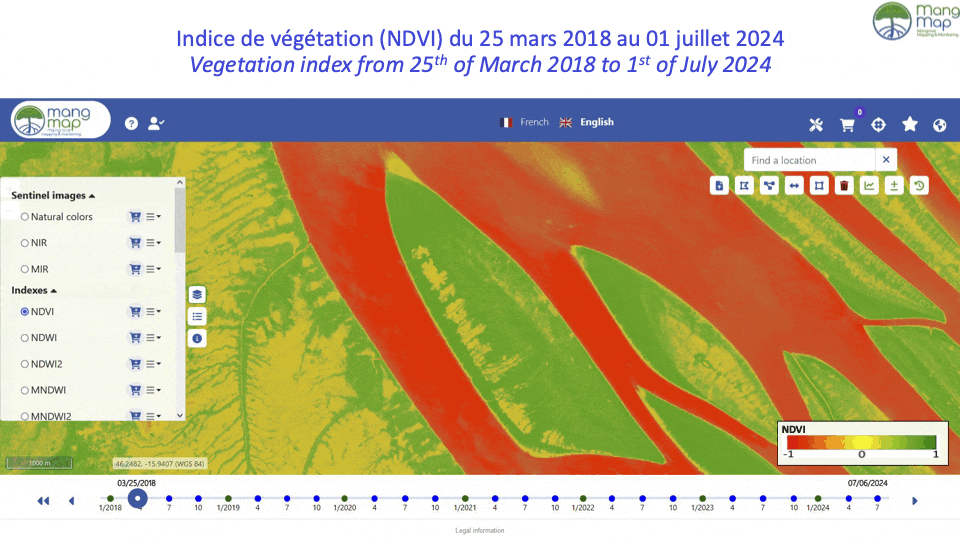The Bombetoka mangroves: a dynamic ecosystem facing multiple challenges
The diversity of mangroves along Madagascar's coasts is remarkable, such as those in the estuary of the Betsiboka River - the Bombetoka - which represent one of the largest expanses of mangroves in Madagascar (over 72,000 ha).
This unique region is characterized by a series of islets that are constantly evolving as a result of major sedimentary inputs, as shown by Earth observation images taken over the last 50 years. Rapidly colonized by Avicennia marina, these islets gradually expand and merge.
However, what initially favors the development of mangroves eventually leads to their decline: the reduction in submersion phases, combined with soil compaction and salinization, leads to the natural senescence of this ecosystem.
Even more worrying, two recent phenomena are accelerating the degradation of this fragile forest cover:
- Targeted clear-cutting by local populations since 2010,
- Annual and repeated attacks by a defoliator caterpillar first identified in the region in 2020.
Sentinel-2 satellite images enable us to identify these different processes thanks to their distinct spatio-temporal signatures:
- Senescence: slow progression with blurred contours, starting in the heart of the islets,
- Anthropogenic cuts: sharp geometric shapes produced within a few days,
- Caterpillar attacks: rapid defoliation along recently colonized banks.
The Tsalopy islet is a perfect example of the complex dynamics threatening the future of this vital ecosystem, which provides many resources for the local population.
